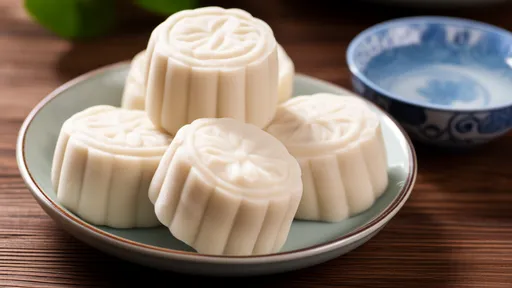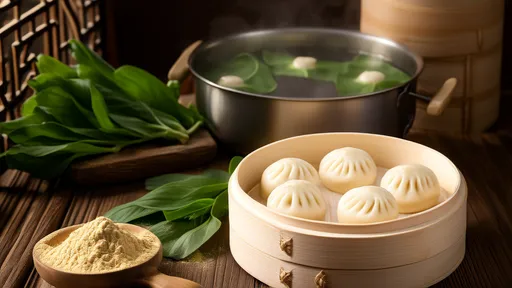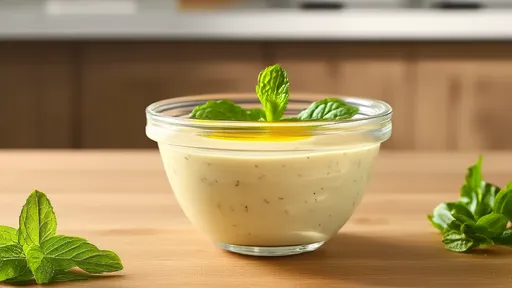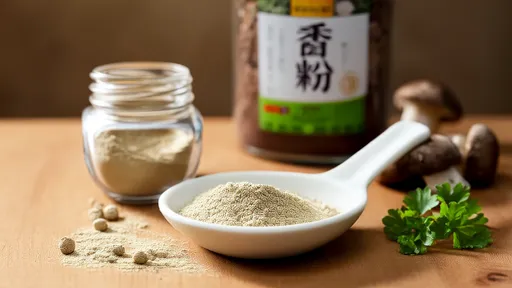In recent years, the culinary world has witnessed a growing shift toward healthier seasoning alternatives. One notable trend is the use of mushroom powder as a natural substitute for monosodium glutamate (MSG). This approach aligns with the "reduce salt, enhance umami" philosophy, which prioritizes both health and flavor. Unlike artificial additives, mushroom powder offers a rich, earthy depth to dishes while reducing reliance on excessive sodium. Its popularity stems not only from its nutritional benefits but also from its versatility in various cuisines.
Why Replace MSG with Mushroom Powder?
MSG has long been a controversial ingredient due to its potential side effects, including headaches and nausea in sensitive individuals. While it effectively enhances umami, its synthetic nature raises concerns among health-conscious consumers. Mushroom powder, on the other hand, is derived from dried and ground mushrooms—typically shiitake, porcini, or a blend of varieties. These fungi are naturally packed with glutamates, the compounds responsible for umami taste, making them an ideal replacement. Additionally, mushrooms contain essential nutrients like B vitamins, fiber, and antioxidants, adding a nutritional boost to meals.
The process of creating mushroom powder is straightforward. High-quality mushrooms are dehydrated at low temperatures to preserve their flavor and nutrients, then finely ground into a powder. The result is a concentrated seasoning that can be sprinkled into soups, stir-fries, marinades, or even sprinkled over popcorn. Its ability to dissolve easily makes it a convenient addition to both hot and cold dishes.
Culinary Applications and Flavor Profiles
Mushroom powder’s flavor varies depending on the type of mushroom used. Shiitake powder, for instance, delivers a robust, smoky umami, while porcini powder offers a more delicate, nutty richness. Blending multiple varieties can create a balanced and complex taste profile. Chefs and home cooks alike have embraced this ingredient for its ability to elevate plant-based dishes, meat substitutes, and traditional recipes without overpowering other flavors.
One of the most appealing aspects of mushroom powder is its adaptability. It can be used as a 1:1 substitute for MSG in most recipes, though some experimentation may be needed to achieve the desired intensity. For example, a teaspoon of mushroom powder might replace half a teaspoon of MSG in a broth, with adjustments made based on personal preference. Its moisture-absorbing properties also make it useful as a dry rub for meats or roasted vegetables.
Health Benefits Beyond Umami
Beyond its culinary advantages, mushroom powder supports overall wellness. Studies suggest that certain mushrooms, like shiitake, possess immune-boosting properties due to compounds such as beta-glucans. Unlike MSG, which provides empty flavor enhancement, mushroom powder contributes to a dish’s nutritional value. It’s also low in calories and carbohydrates, making it suitable for various dietary plans, including keto and vegan diets.
Another overlooked benefit is its potential to aid in reducing sodium intake. By amplifying umami, mushroom powder allows cooks to cut back on salt without sacrificing taste—a critical consideration for those managing hypertension or heart health. This dual role as both a flavor enhancer and a health-promoting ingredient underscores its value in modern kitchens.
Embracing the Shift in Home and Professional Kitchens
The adoption of mushroom powder reflects broader trends toward clean eating and sustainable cooking. Many artisanal producers now offer organic, small-batch mushroom powders, catering to discerning consumers. Restaurants, too, are incorporating it into signature dishes to meet demand for transparent, wholesome ingredients.
For those new to mushroom powder, starting with small quantities is recommended. Its earthy notes can intensify over time, so gradual incorporation helps achieve a harmonious balance. As more people discover its potential, this humble ingredient is poised to become a staple in pantries worldwide—proof that great flavor need not come at the expense of health.

By /Jul 31, 2025

By /Jul 31, 2025

By /Jul 31, 2025

By /Jul 31, 2025

By /Jul 31, 2025

By /Jul 31, 2025

By /Jul 31, 2025

By /Jul 31, 2025

By /Jul 31, 2025

By /Jul 31, 2025

By /Jul 31, 2025

By /Jul 31, 2025

By /Jul 31, 2025

By /Jul 31, 2025

By /Jul 31, 2025

By /Jul 31, 2025

By /Jul 31, 2025

By /Jul 31, 2025

By /Jul 31, 2025

By /Jul 31, 2025